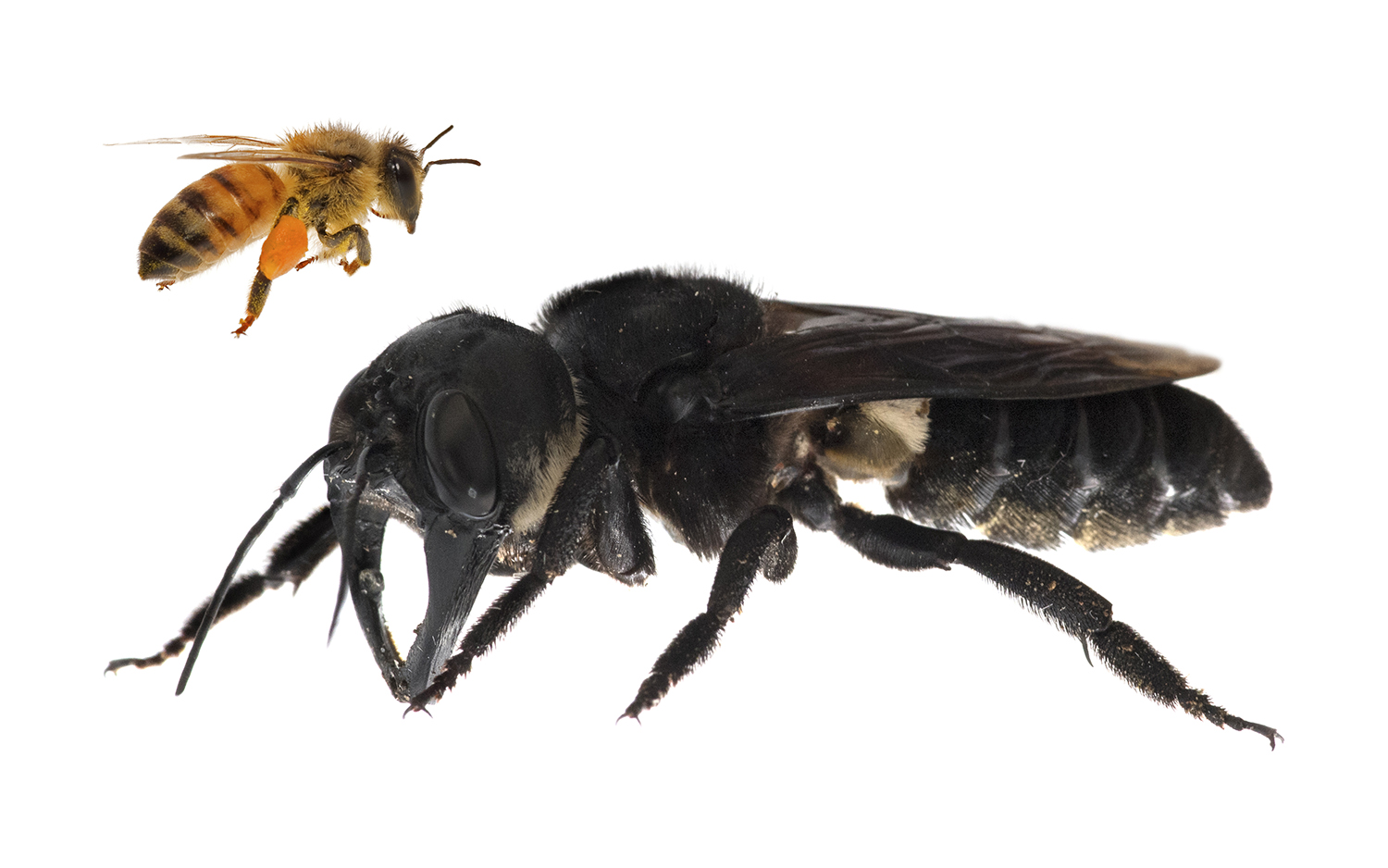This Massive, Nightmare Bee Was Once Thought Extinct. Not Anymore.
However, scientists finally spotted the rare bee in January, in the Indonesian province of North Maluku on the Maluku Islands. They detected a solitary female bee after investigating the region for five days, and a photographer captured the first-ever images of a living Wallace's Giant Bee (Megachile pluto) at the insect's nest in an active termite mound.
"It was absolutely breathtaking to see this 'flying bulldog' of an insect that we weren't sure existed anymore," photographer Clay Bolt, who captured the images of the giant, said in a statement published by The University of Sydney in Australia. [In Photos: Bee Eyes and Meat-Eating Plants Light Up Micro-Photo Contest]
Little is known about these elusive insects' habits. The bees' dark-colored bodies measure about 1.5 inches (3.5 cm) in length — about as long as a human thumb — and they build communal nests on termite dwellings in trees, Adam Messer, a researcher who was with the Department of Entomology at the University of Georgia in 1984, wrote in a study published then in the Journal of the Kansas Entomological Society.
Messer was the last scientist to document the supersize bees in the wild — until now.

"Messer's rediscovery gave us some insight, but we still know next to nothing about this extraordinary insect," Eli Wyman, an entomologist at Princeton University and one of the researchers who rediscovered the lost bee, said in the statement. The rediscovery could help researchers learn more about the elusive bee, Wyman added.
- On the Hunt: Honeybee Scouts Find Food
- Here's What Wasp Faces Look Like Up-Close
- Photos: Amazing Insects of the North American Deserts
Originally published on Live Science.
Sign up for the Live Science daily newsletter now
Get the world’s most fascinating discoveries delivered straight to your inbox.

Mindy Weisberger is an editor at Scholastic and a former Live Science channel editor and senior writer. She has reported on general science, covering climate change, paleontology, biology and space. Mindy studied film at Columbia University; prior to Live Science she produced, wrote and directed media for the American Museum of Natural History in New York City. Her videos about dinosaurs, astrophysics, biodiversity and evolution appear in museums and science centers worldwide, earning awards such as the CINE Golden Eagle and the Communicator Award of Excellence. Her writing has also appeared in Scientific American, The Washington Post and How It Works Magazine. Her book "Rise of the Zombie Bugs: The Surprising Science of Parasitic Mind Control" will be published in spring 2025 by Johns Hopkins University Press.










